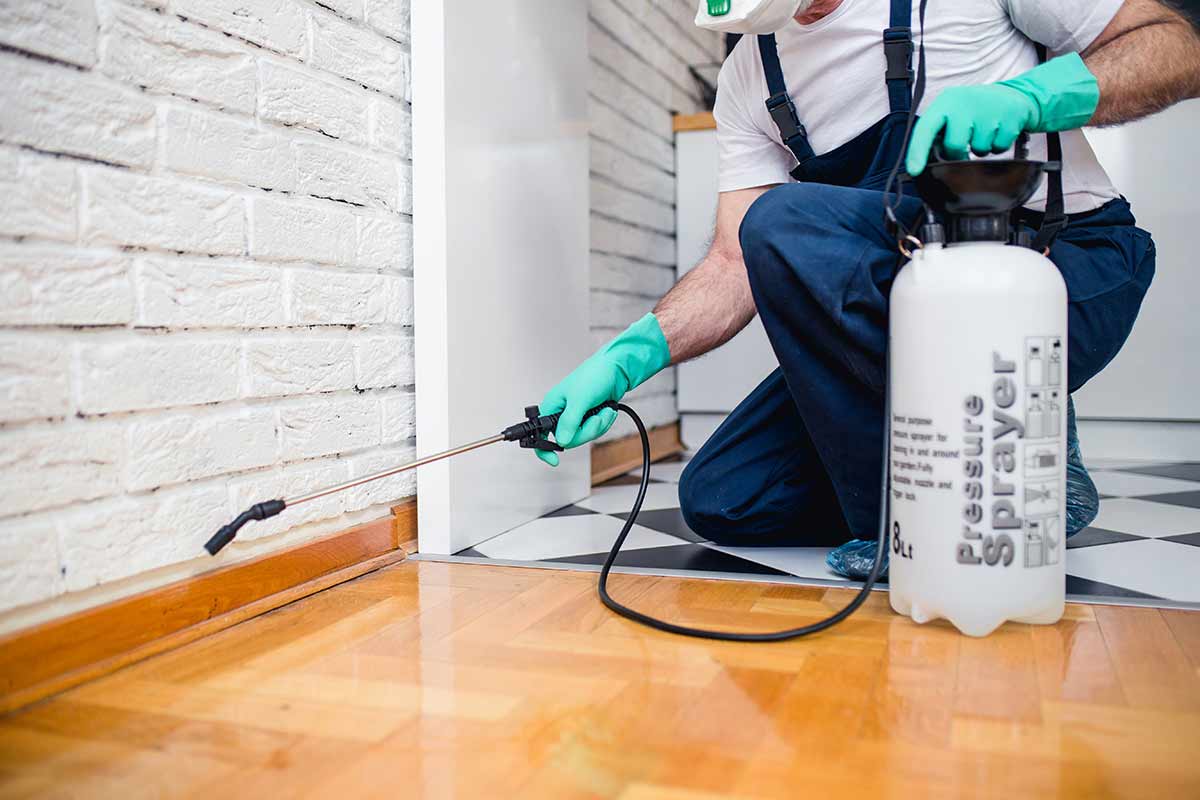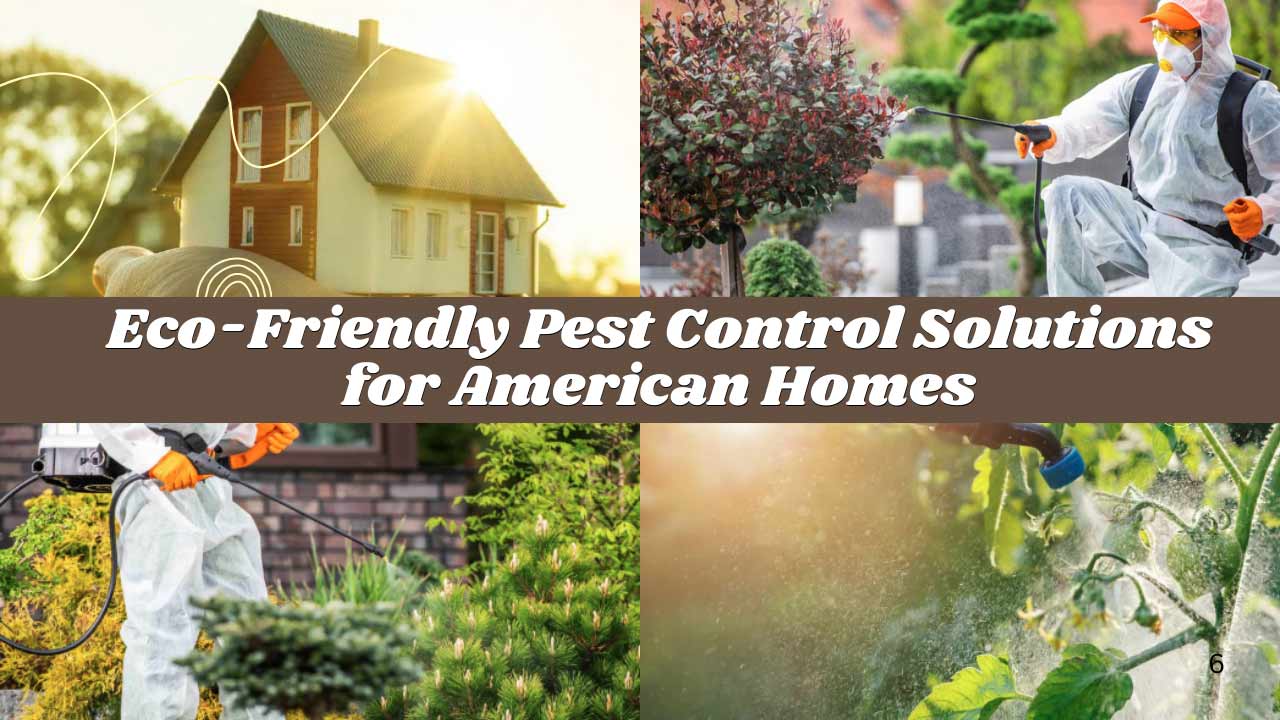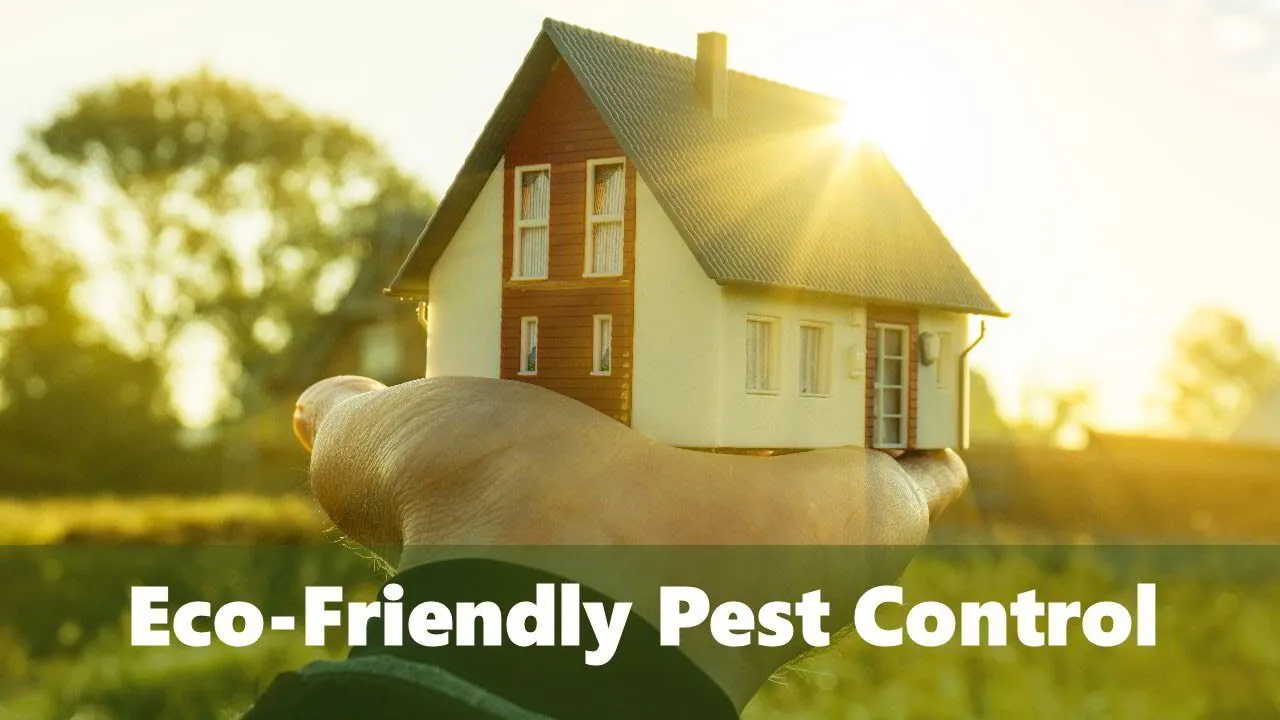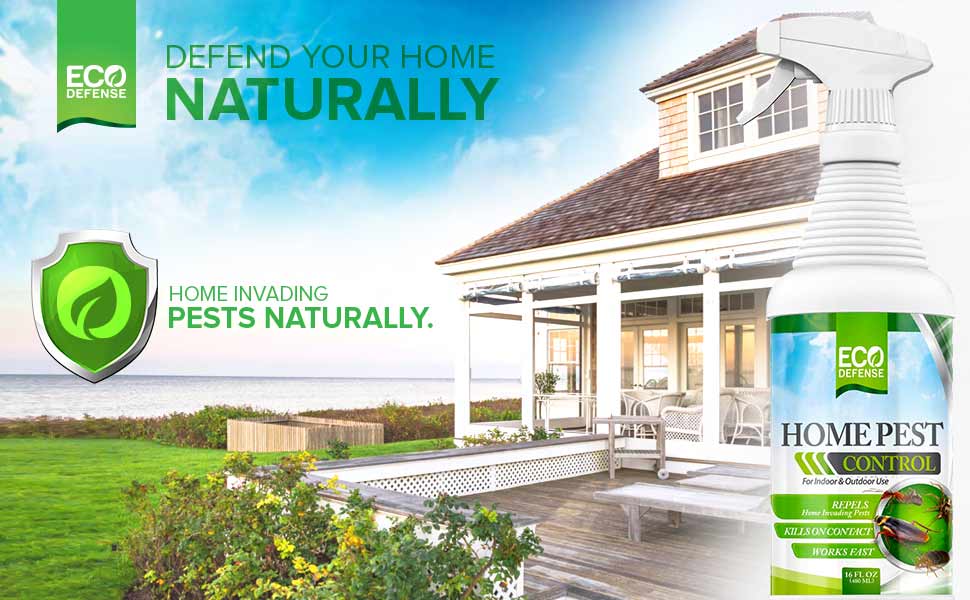Introduction: A War We Didn’t Ask For
In the quiet sanctuaries of our homes, a silent invasion is always underway. From termites tunneling beneath our floors to cockroaches nesting behind our fridges, pests exploit the smallest vulnerabilities. And yet, the era of harsh poisons and toxic fogs is fading. In 2025, a new standard has emerged: eco-safe pest control—smart, subtle, sustainable, and safe for your family and the planet.
This article will guide you through:
-
The hidden reasons pests choose your home
-
Eco-conscious methods that outperform traditional tactics
-
Long-term strategies that keep pests out—without sacrificing health or harmony
Let’s begin with what most exterminators won’t tell you: your home is more than shelter—it’s a signal.
Understanding the Root: Why Pests Choose Your Home
Pests aren’t random. They’re strategic, instinct-driven survivors. To defeat them, you need to think like them.
The Pest Triangle: Food, Water, Shelter
Just like humans, pests are drawn to three fundamentals:
| Element | Common Sources in Homes |
|---|---|
| Food | Crumbs, pet food, open trash bins, dirty dishes |
| Water | Leaky pipes, humid bathrooms, plant saucers |
| Shelter | Wall voids, attics, basements, clutter |
💡 Eco-safe control starts with prevention: cut the triangle, and pests vanish naturally.

pest-predictions
Know Your Local Threats: 2025’s Top Urban Invaders
Every region has its villains. Here’s a breakdown of the most persistent pests plaguing modern homes this year:
| Pest Type | Behavior Highlights | Entry Points |
|---|---|---|
| Ants | Colony-based, persistent in kitchens | Cracks, baseboards, plumbing |
| Termites | Silent wood destroyers, active year-round | Soil, foundations, wood siding |
| Rodents | Smart, resourceful, dangerous contaminators | Roof gaps, vents, utility holes |
| Cockroaches | Thrive in warmth, hide in shadows, spread fast | Sewers, under doors, piping gaps |
| Spiders | Not all harmful, but signal other insect presence | Open windows, attic vents |
| Mosquitoes | Breed in stagnant water, disease carriers | Drains, birdbaths, planters |
🧠 Pro tip: Knowing the entry points is 80% of eco-defensive strategy.
Eco-Safe Control: The Foundation of the Future
Eco-safe pest control isn’t just about ditching poisons—it’s a philosophy. It means using nature, tech, and timing instead of toxic shortcuts.
Integrated Pest Management (IPM): The Gold Standard
IPM is the backbone of responsible pest control. It combines:
-
Biological control (introducing natural predators like nematodes or ladybugs)
-
Physical control (barriers, traps, and structural repairs)
-
Cultural control (cleaning habits, plant spacing, composting methods)
-
Minimal chemical use (only as a last resort, and always plant-based or low-impact)
📘 According to the EPA’s 2025 IPM Advisory, homes using this method saw a 62% drop in pest recurrence within the first year.
Safe Products That Work
Today’s best solutions are both effective and eco-certified. Look for these active ingredients and methods:
| Natural Agent | Works Against | How It Works |
|---|---|---|
| Diatomaceous Earth | Ants, roaches, fleas | Microscopic cuts to exoskeletons |
| Neem Oil | Aphids, mites, termites | Disrupts hormonal systems in insects |
| Borax | Roaches, ants | Dehydrates and disrupts digestion |
| Cedarwood Oil | Moths, mosquitoes | Disorients and repels with scent |
| Peppermint Oil | Spiders, mice | Overwhelms sensory receptors |
| Sticky Traps | Crawling insects | Physically contain and remove pests |
🌿 Always choose products labeled “OMRI Listed” or “EcoCert” to ensure global eco-safety standards.

pest-fight
Smart Home Tech for Pest Control
In 2025, your home can outsmart pests before you even see them.
Automated Defense Systems
Tech-enhanced prevention is growing fast. These innovations are leading the charge:
-
Smart ultrasonic pest repellers – emit high-frequency pulses that disturb rodents and insects
-
Moisture and humidity sensors – alert you before conditions attract pests
-
Camera-enabled traps – instantly notify you when a pest is caught
-
AI-integrated apps – identify pest types from phone photos and suggest treatments
-
Smart vents and dehumidifiers – control airflow to discourage pest-prone humidity
📊 According to a 2025 SmartHome Lab report, homes with automated pest detection saw infestations decrease by 74% over 6 months.
Case Study: The Smart Garden Fence
A family in Phoenix installed motion-triggered garden lights, ultrasonic rodent barriers, and Wi-Fi connected cameras. Their yard, previously overrun with rabbits, rats, and raccoons, became 100% pest-free within 3 weeks—without a single chemical spray.
Eco-Friendly Indoor Defense Tactics
Protecting your interior is about blocking, trapping, and repelling—safely.
Seal the Fortress
-
Use silicone-based caulk to close cracks around windows, doors, pipes, and baseboards
-
Install door sweeps and mesh screens
-
Add foam weather stripping to attic hatches and vents
-
Use copper mesh to block larger rodent access points
🔒 Physical barriers reduce over 50% of initial pest entries according to the National Green Pest Report (2025).
Natural Indoor Deterrents
| DIY Deterrent | How to Use |
|---|---|
| Lemon eucalyptus spray | Mist along windows and under sinks |
| Cinnamon and clove sachets | Place in pantries and closets to deter ants |
| Vinegar and water spray | Great for wiping surfaces to erase scent trails |
| Mint plants on windowsills | Natural spider repellent |
These simple additions enhance both your home’s scent and its resistance to pests.
Outdoor Defense: Turning Nature Into Your Ally
Your backyard, garden, or patio may be the first battlefield pests cross before reaching your sanctuary. Smart landscaping choices and natural deterrents can transform outdoor spaces into an eco-barrier that pests won’t dare enter.

killing pests
Landscaping with Pest Resistance in Mind
Pests love overgrowth, dampness, and neglected zones. By designing your landscape with clarity and control, you starve them of shelter and access.
Eco-Friendly Landscaping Strategies
| Strategy | Pest-Fighting Benefit |
|---|---|
| Gravel borders | Prevent ants and crawling insects from reaching the house |
| Trimmed hedges and grass | Reduces hiding spots for rodents, snakes, and ticks |
| Native plants | Require less water and attract fewer invasive pests |
| Elevated garden beds | Make it harder for burrowing pests to attack plants |
| Mulching with cedar chips | Repels fleas, ticks, and other soft-bodied insects |
🌿 Bonus: These techniques don’t just repel pests—they save water, reduce chemical use, and boost curb appeal.
Beneficial Wildlife and Insects
A surprising truth: not all bugs are bad. Encouraging predator species can maintain balance naturally and prevent chemical dependence.
Top Natural Allies to Attract
-
Ladybugs – Feast on aphids and mites
-
Praying mantises – Generalist predators of caterpillars and beetles
-
Bats – Each bat can eat up to 1,000 mosquitoes per hour
-
Barn owls – Silent rodent control for rural and suburban homes
-
Lizards and frogs – Excellent for managing ants and small insects
To attract them:
-
Install bat boxes, insect hotels, and small water features
-
Avoid pesticides that could kill off helpful species
-
Keep lighting low at night to maintain the natural rhythm of predators
Sustainable Pest Control for Gardens and Greenhouses
For green thumbs, pests are more than a nuisance—they’re crop killers. Yet even here, you can maintain both health and harvest without harming nature.
Organic Pest Control Methods for Plants
| Natural Method | Target Pest | Application Tip |
|---|---|---|
| Neem oil | Aphids, whiteflies | Spray on leaves in early morning |
| Companion planting | Beetles, nematodes | Plant marigolds with tomatoes |
| Floating row covers | Caterpillars, beetles | Use breathable mesh over crops |
| Sticky traps | Gnats, flies | Place near seedlings and moist areas |
| BT (Bacillus thuringiensis) | Leaf-eating caterpillars | Use only as needed to protect butterflies |
🪴 Your garden can be lush, organic, and pest-free with these tested strategies.
Hydration Without Infestation
Overwatering attracts mosquitoes, fungus gnats, and ants. Here’s how to water smart:
-
Install drip irrigation systems to reduce standing water
-
Use terra cotta spikes for gradual plant hydration
-
Empty trays, buckets, and birdbaths every few days
-
Add a small water pump or fountain to ponds to keep water moving
📉 Studies show landscapes with proper water management see 68% fewer pest infestations over a growing season.
Child-Safe and Pet-Friendly Pest Control
One of the strongest reasons to go eco is to protect the smallest members of your household—kids and pets are highly vulnerable to traditional poisons.
Risks of Traditional Pesticides
-
Neurotoxins in sprays can impair early brain development
-
Rodenticides are often fatal to dogs and cats if accidentally ingested
-
Surface chemicals can be absorbed through skin or inhaled by crawling babies
😟 A 2024 study by the Global Environmental Health Authority found over 35% of accidental child poisonings in the home were linked to pest-control products.
Eco-Safe Alternatives for Families
Here’s how to defend your space while keeping your loved ones safe:
| Method | Child- and Pet-Safe? | Notes |
|---|---|---|
| Ultrasonic repellents | ✅ | No chemicals, plug-in and forget |
| Essential oil sprays | ✅ (with dilution) | Use peppermint or citronella away from pets |
| DIY herbal sachets | ✅ | Use rosemary, bay leaf, and lemon balm |
| Vinegar traps (covered) | ✅ | For fruit flies and gnats |
| Enclosed bait stations | ⚠️ | Safe if placed out of reach and secured |
The Rise of Subscription-Based Pest Monitoring
Why wait until pests attack when you can stay constantly protected?
In 2025, modern homeowners are turning to subscription-based pest monitoring services that offer:
-
Monthly reports based on data from smart traps and sensors
-
AI alerts via mobile app the moment activity is detected
-
On-demand consultations with eco-certified experts
-
Customized action plans built on your environment and location
💬 Top services in 2025 include “PestGuardian AI,” “EcoHome Shield,” and “ZeroTrace Living.”
Eco-Certifications to Trust in 2025
With “greenwashing” rampant, not every “eco” label is legit. Look for these trustworthy seals when buying pest control products or hiring professionals:
| Certification | What It Means |
|---|---|
| OMRI Listed | Approved for use in USDA-certified organic operations |
| EcoCert | European standard for environmental product safety |
| GreenPro Certified | Issued by NPMA for eco-conscious pest professionals |
| USDA Organic | Product meets federal standards for organic handling |
| EPA Safer Choice | Recognized as non-toxic to people and pets |
🔎 Using verified products ensures real results without greenwashing gimmicks.
Common Mistakes to Avoid
Many homeowners accidentally sabotage their own pest control efforts. Here’s what not to do:
-
Leaving pet food out overnight
-
Storing firewood near the foundation
-
Blocking vents without airflow solutions
-
Using scented candles that attract rather than repel
-
Applying DIY sprays too often, disrupting predator insects
🚫 Even natural solutions, when overused or misapplied, can backfire.
Smart Technology for Pest Prevention in the Modern Era
Technology has stepped beyond detection and now plays a pivotal role in prevention. Homes equipped with smart pest control solutions are leading the green defense against infestations.
Next-Gen Smart Devices to Consider
| Device Name | Function | Eco Advantage |
|---|---|---|
| PestCam AI | Motion-triggered cameras to identify rodent paths | Prevents overuse of traps |
| SmartBait™ | Bait stations that alert when accessed | Reduces manual checking and waste |
| TempGuard Sensors | Monitors humidity to stop mold/mosquitoes | Data helps optimize home environment |
| EcoVibe Ultrasonics | Emits vibrations to repel without harm | No chemicals, pet-safe deterrence |
✅ Many of these systems integrate directly with smart homes via Google Home or Alexa.
AI-Powered Pest Forecasting
Predictive AI tools like InsectIntel and MiteWatch 360 now analyze:
-
Regional weather patterns
-
Breeding cycles
-
Nearby infestation reports
-
Home moisture and temperature levels
This allows homeowners to act before pests even arrive — a revolution in proactive pest management.
Green Commercial Pest Control: For Airbnb, Offices, and Rentals
Whether you’re managing a vacation rental or corporate building, eco pest control is now a competitive advantage.
Sustainable Business Practices That Work
-
Eco inspections between guest stays
-
Natural repellents in HVAC systems and vents
-
Customer-visible certifications for green assurance
-
Routine scent-based deterrents in lobbies and shared kitchens
-
Smart data logs to identify recurrent zones
💼 Sustainable pest control is not just ethical — it’s profitable. Guests and clients are more likely to return to clean, chemical-free environments.
Two Real-World Case Studies
Let’s look at how modern homes turned to eco-solutions — and thrived.
Case Study 1: Suburban Family Home in Oregon
-
Problem: Rodent nesting under deck
-
Action: Installed motion-activated lights, sealed entry points, planted mint and rosemary border
-
Result: No rodent activity in 14 months, pets and children unaffected
Case Study 2: Urban Apartment Complex in Miami
-
Problem: Recurring cockroach infestation in basement laundry
-
Action: Switched to ultrasonic repellents, applied boric acid dust in inaccessible cracks, added exhaust fans
-
Result: 92% reduction in sightings; passed bi-annual city inspection with top marks
Table: Chemical vs Eco Pest Control
| Aspect | Chemical Approach | Eco Approach |
|---|---|---|
| Health Impact | High (toxicity risks) | Low to none |
| Environmental Footprint | Severe (residue, runoff) | Minimal or zero |
| Cost Over Time | High (repeat applications) | Lower (preventive measures) |
| Long-Term Effectiveness | Often short-lived | Cumulative with ongoing protection |
| Regulatory Compliance | Risk of fines in some areas | Fully compliant with green standards |
Frequently Asked Questions (FAQ)
Q: Are eco pest control methods really effective long term?
A: Yes — when integrated properly. Natural methods target pest behavior and habitat, offering sustainable suppression rather than temporary extermination.
Q: What’s the best eco solution for ant infestations?
A: Use a combination of vinegar spray, diatomaceous earth, and entry sealing. Place bay leaves in corners where food is stored.
Q: Do ultrasonic pest repellents really work?
A: Studies show effectiveness for certain pests like rodents and spiders, especially when combined with physical barriers and cleaning protocols.
Q: Can I DIY eco pest control or should I hire a professional?
A: DIY is fine for minor issues. For complex infestations, choose a GreenPro-certified professional to ensure safe and thorough resolution.
Q: Are pets safe with natural solutions like essential oils?
A: Always check species compatibility. For instance, tea tree oil is toxic to cats. Use diluted, pet-safe blends when in doubt.
Final Thoughts: The Power of Intentional Protection
Your home is your fortress — and how you protect it reflects your values. Choosing eco-safe pest control isn’t just about repelling unwanted visitors. It’s about:
-
Safeguarding the health of your loved ones
-
Respecting nature’s balance rather than disrupting it
-
Investing wisely in solutions that last beyond one season
-
Leading by example in your neighborhood or community
🌎 The war on pests doesn’t need to be toxic. It needs to be smart. In 2025 and beyond, luxury and sustainability no longer conflict — they walk hand in hand.
Backlinks to Authoritative Resources
Watch This: Eco Pest Control in Action
▶️


